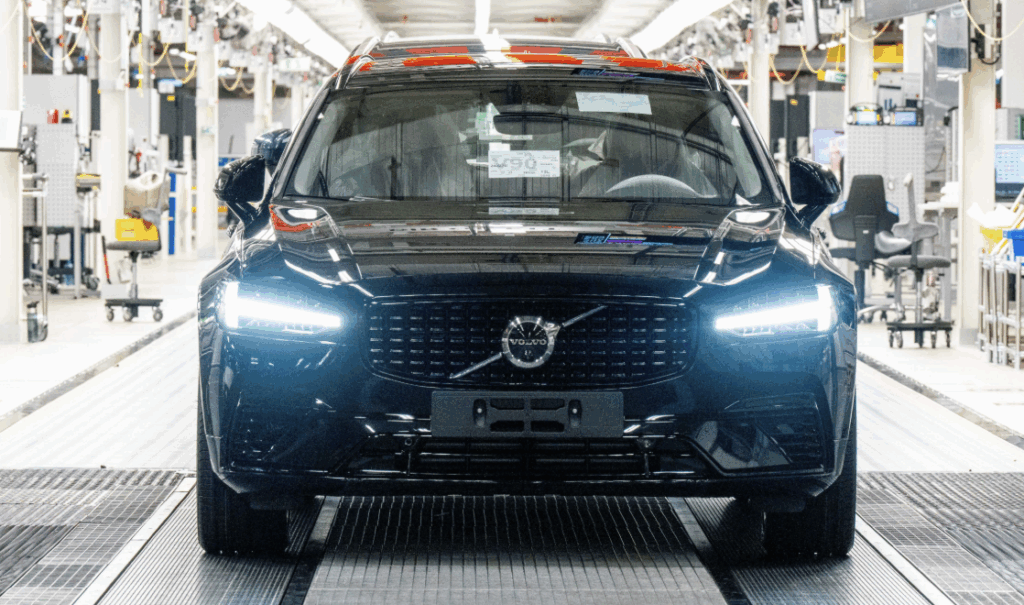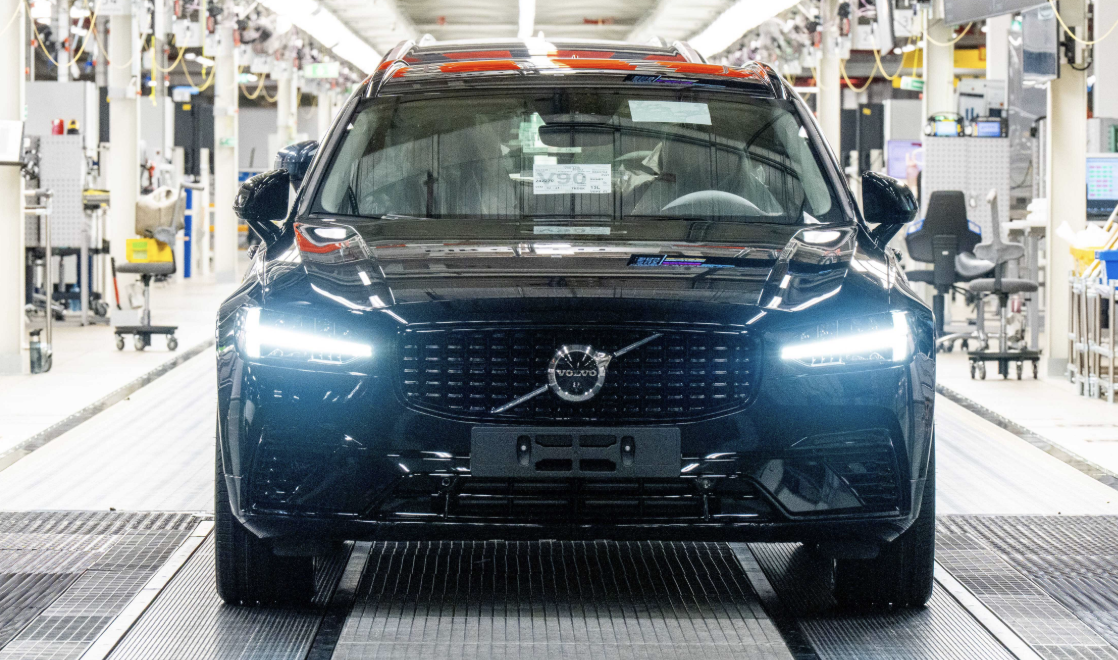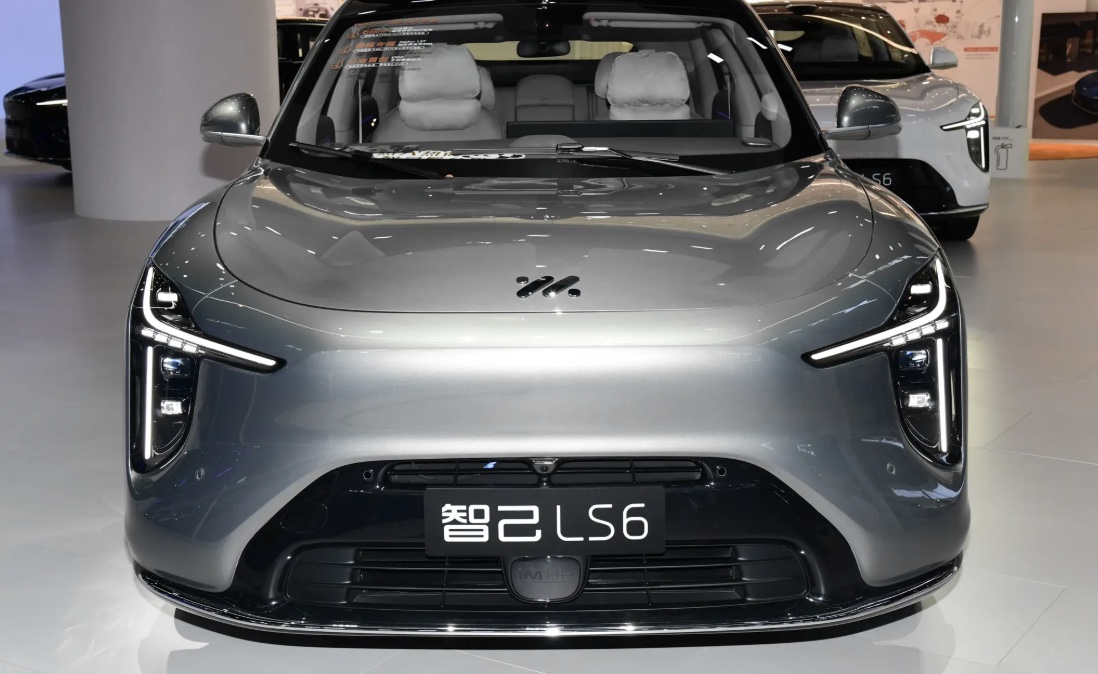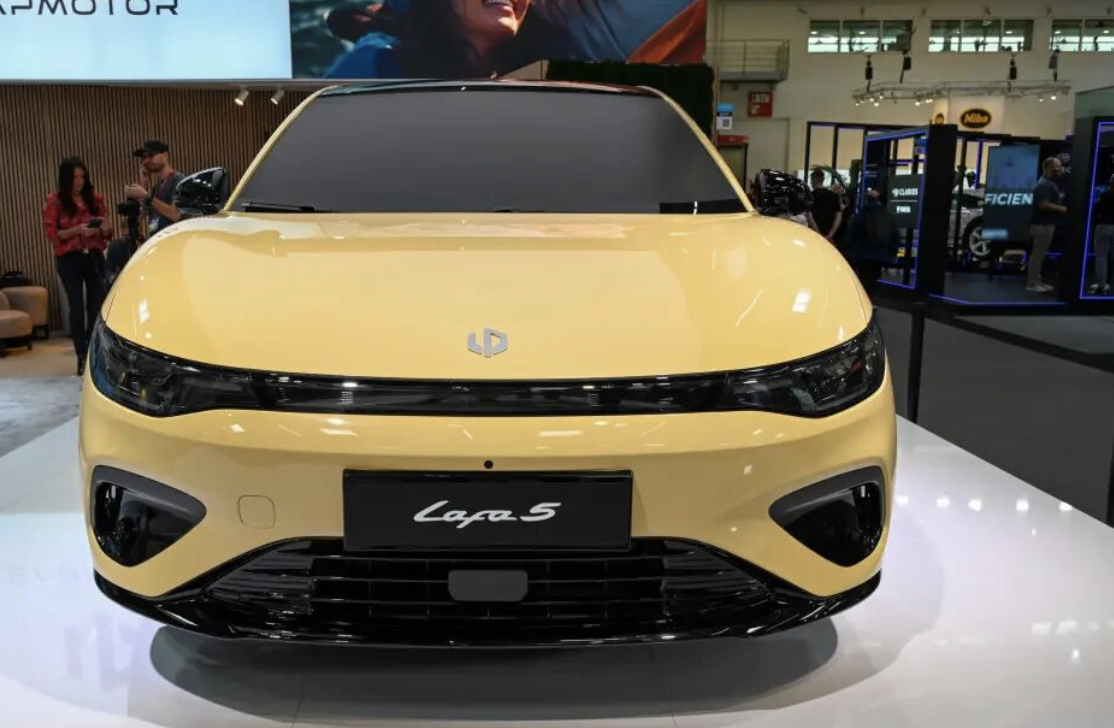On October 11, the last Volvo V90 rolled off the production line at the Torslanda plant in Sweden and was added to Volvo’s Heritage Collection in a black finish. It will be displayed alongside other historic models at the “Volvo World” exhibition in the city center of Gothenburg for public viewing. This marks the official end of the V90, a classic station wagon with decades of history, and there are no immediate plans for a direct successor model.

The Volvo V90 traces its roots to the Volvo 900 series, with the luxury model 960 being renamed V90 in 1996, marking the introduction of the V90 name. Production of the V90 began in 1997, which was essentially a rebranded 960 Wagon, equipped with a 3.0L 24V naturally aspirated six-cylinder gasoline engine. The V90 was discontinued in 1998 and was indirectly replaced by the P2 V70.
In February 2014, Volvo unveiled the “Volvo Concept Estate” at the Geneva Motor Show, laying the groundwork for the V90’s creation. In February 2016, Volvo officially launched the new V90 estate car in Stockholm, followed by its public debut at the Geneva Motor Show in March. The V90 Cross Country was first revealed at the Paris Motor Show in September of the same year, with sales commencing in April 2017 at the Shanghai Auto Show. The V90 is based on Volvo’s new SPA platform, featuring a front-engine layout and a 2.0T turbocharged engine paired with an 8-speed automatic transmission, available in both front-wheel and all-wheel-drive configurations. The V90 lineup includes the standard V90 and the V90 Cross Country, a more rugged version with higher ground clearance and enhanced off-road capability. The current V90 is imported into the domestic market, and it was launched in July 2023 with an official starting price of ¥391,800. With the discontinuation of the V90, its sales in the domestic market are expected to cease.
Regarding the V90’s discontinuation, Volvo Cars CEO Jim Rowan stated that the market has changed, with consumers increasingly favoring SUVs. The last V90 was assembled in September, and he hinted that the V60, another wagon model, would not be updated after its lifecycle ends. However, production of the V60 will continue for the time being. Volvo emphasized that the discontinuation of the V90 aligns with the brand’s “global product cycle plan,” with a current focus on the development of crossovers and SUVs. This decision, while disappointing to many wagon enthusiasts, reflects the reality of balancing market trends with brand heritage—when a model no longer contributes strong sales, it becomes inevitable to phase it out.
It is worth noting that the sedan version of the V90, the S90, has not been fully discontinued. In April of this year, Volvo officially released the updated S90, marking the second mid-life refresh for this generation, with sales in China starting in May, priced between ¥300,900 and ¥454,900. The new S90 continues to be sold in China and some other Asian markets, while it has been discontinued in the U.S. and Europe. Globally, Volvo plans to replace the fuel-powered S90 with the all-electric ES90, which was unveiled in March this year in Stockholm. Built on the SPA2 platform, the ES90 is a mid-to-large electric sedan. Additionally, Volvo has revived the “XC70” name, previously used for rugged station wagons, launching a new XC70 on September 27. This is a mid-to-large SUV positioned between the XC60 and XC90, the first model based on the new SMA platform. Designed specifically for the Chinese market, it is equipped with a 1.5T engine and a plug-in hybrid system consisting of single and triple electric motors (P1+P2+P4). The single-motor version has a combined system power of 234kW and is equipped with a 21.1 kWh lithium iron phosphate battery, providing a pure electric range of 116km based on the CLTC cycle. The three-motor version has a combined system power of 340kW and is equipped with a 39.6 kWh ternary lithium battery, providing a pure electric range of 212km and a total range of over 1200km.
In September, Volvo Cars sold 63,212 vehicles globally, marking a 1% year-on-year increase. The cumulative sales for the first three quarters of 2025 reached 514,294 vehicles, an 8% year-on-year decline. In Europe, September sales amounted to 31,723 vehicles, a 1% increase, while the U.S. saw a 3% increase with 8,758 vehicles sold. In China, Volvo’s sales reached 12,166 vehicles, a 6% decline. The best-selling model in September was the XC60 with 20,496 units sold, followed by the XC40/EX40 with 15,904 units, and the XC90 with 8,252 units.



